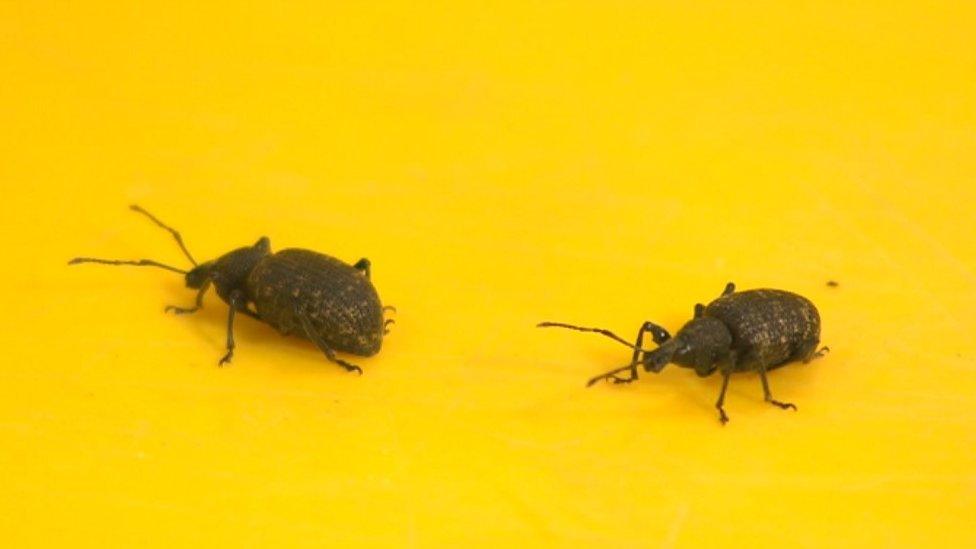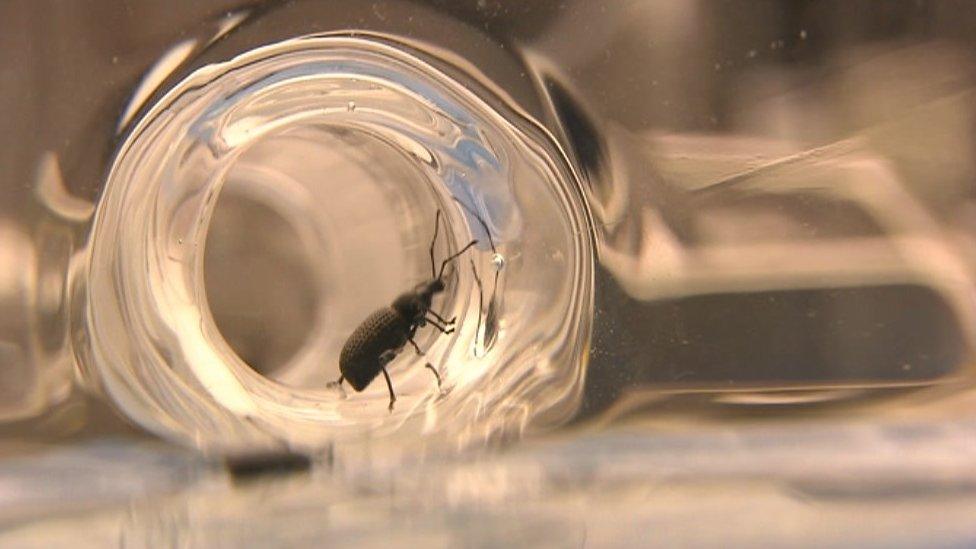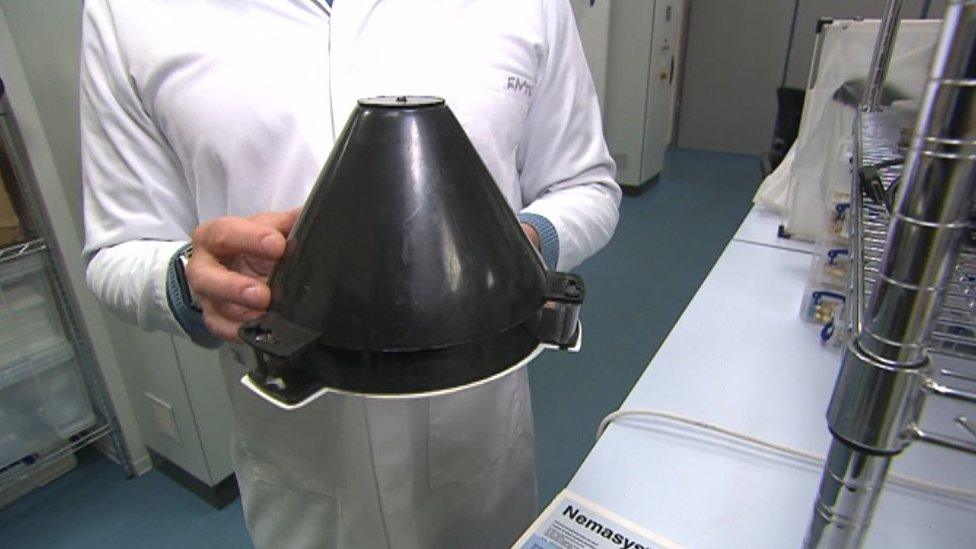Weevils nibble but they won't slow down on plant damage
- Published

Many gardeners and commercial growers say vine weevils are a pest
Vine weevils are a recognisable garden visitor. You might consider them a pest, external for the damage they can do to plants.
But for commercial growers they are a very real problem.
The ornamental plant industry is worth about £800m a year in the UK and weevils do £20m of damage a year.
If a grower sends plants to a seller who discovers any weevils or telltale signs of leaf damage, then the whole batch will be returned.
There's a few reasons why vine weevils can be such a problem.
They're all female and reproduce without sex.
That means you can go from just one to an infestation in a short period of time.
The adults are nocturnal, so hard to spot, and the larvae are even more secretive, hiding in the soil and demolishing the roots.
Nematodes

A weevil pauses to decide which smell it prefers in the “choice chamber”
There are ways to tackle weevils by using nematodes, which are a natural predator.
But nematodes are expensive to apply, so growers really want to be sure there's a problem before reaching for them.
Now three Midlands universities have come together, like a sort of scientific Avengers, to try to tackle this problem.
And what they want to do is create an easy-to-use weevil trap that growers can check for any signs of infestation.
But how do you make a weevil trap, technically it's a weevil refuge, attractive to a pest that's surrounded by delicious ornamental plants?
Well you make it cosy and snug and you create a signature scent that will drive weevils wild.
Whiff of frass

The finished weevil trap will look something like this and smell really amazing. If you are a weevil
Enter the "choice chamber".
You can't ask weevils what they like, but what the team have done is create a Y-shaped experimental apparatus that reveals their favourite smells.
Put the weevils in one end and put two different plants at the other end. Blow air across everything and see which plant the weevils prefer.
There's more detailed work after that, but the eventual result is an artificial scent that weevils can't resist.
As well as a plant element, the smell also includes a whiff of weevil frass, or poo.
Weevils love the smell of their poo apparently, which makes sense since if there's poo there's food and other happy weevils.
So the end result of this collaboration between Harper Adams, external, Keele, external and Warwick universities is a small, conical, weevil trap which growers can check.
The instant a weevil finds its way in there, growers can unleash the nematodes confident there's a problem and they're not wasting an expensive treatment.
And what does this irresistible smell actually smell like?
Well, sort of planty I guess? It's a signature fragrance I'll leave to the vine weevils.
